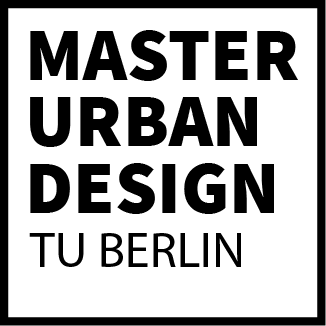 Urban Design Studio 2023/2024
Urban Design Studio 2023/2024
Tutors: Juliana Canedo, Christian Haid, Anke Hagemann
Chair: Habitat Unit
Students:Hannah Jury, Alexandra Nuñez, Gesa Henning
What if humans develop an integrated relationship with nature?
„We sow corn, we plant trees, we fertilize the soil by irrigation, we dam the rivers and direct them where we want. In short, by means of our hands we try to create as it were a second nature within the natural world.“ Cicero, De Natura Deorum.

While manufactured, immersive environmental experiences and „centers“ like NABU blur the line between education, enjoyment, and production. Yet, as long as certain trends continue – loss of biodiversity, privatization, and the cultural strongholds of consumerism and over-valuation of productivity – sites like NABU risk being a removed and isolated capsule of sustainability in a world on fire. If NABU acts as a „model“ for best sustainability practices, how could the model become the norm? What does it mean if a „natural“ lifestyle becomes just a lifestyle, if open space is just space, and human activity isn‘t defined by its risk, but its compatibility with nature?
 In understanding NABU, we became interested in constructed, or artificial “natures”, how it is not the construction or artificiality of a landscape that makes it unnatural, but our perception. Considering a natural landscape is embedded in The Three Natures of Wilderness theory, which show “nature” on a spectrum from wilderness to wealth, representing 1. the sublime, the wild, 2. the cultivated pastoral, and 3. Order and cultural desires. These mirror our three pillars of analysis, one focused on biodiversity and ecosystem functions, the second on agriculture, and the third on cultural priorities and economic governance. In the context of rural Angermünde, we investigate what shifts may take place for humans to dissolve the boundaries between our nature, and the wild. Within the pillars of our analysis: to re-wild, to re-cultivate, and to re-frame.
In understanding NABU, we became interested in constructed, or artificial “natures”, how it is not the construction or artificiality of a landscape that makes it unnatural, but our perception. Considering a natural landscape is embedded in The Three Natures of Wilderness theory, which show “nature” on a spectrum from wilderness to wealth, representing 1. the sublime, the wild, 2. the cultivated pastoral, and 3. Order and cultural desires. These mirror our three pillars of analysis, one focused on biodiversity and ecosystem functions, the second on agriculture, and the third on cultural priorities and economic governance. In the context of rural Angermünde, we investigate what shifts may take place for humans to dissolve the boundaries between our nature, and the wild. Within the pillars of our analysis: to re-wild, to re-cultivate, and to re-frame.

Natural experiences, green space, environmental recreation, open space: may be manicured, calculated and embedded in capitalist endeavors. In the context of imminent climate catastrophe, our constructed natures have not protected ecosystems from biodiversity collapse. As long as nature is an idea, and wilderness is something to work away from, we will have damaging relationships to our ecosystems. In many spaces celebrated for connecting us to the environment, (i.e. US National Parks), they were created at the cost of other human activities that worked around and within the landscape. To appreciate a single view of nature, means to reject another.
 We have considered the role of „education“ in sustainable development, sometimes discussing it as a goal with criteria, to be fulfilled as an end, rather than a means. Considering the artificial and removed human relationship with „nature“ through the lens of „education“, we are pushed to challenge the pedagogy of „nature“, and of „education“ itself. If true integration with ecosystems requires cultural, economic, and institutional upheaval, the hierarchal ties of education, and thus environmental education as we understand it also require revaluation. Place-based knowledge of the environment may play a key role in maintaining integration with nature, but only as a dynamic process that changes with communities. In the same way provision of green space does not integrate humans with ecosystems on its own, expanding environmental education in current institutions and curricula does not evolve human connection to place and relationship with nature.
We have considered the role of „education“ in sustainable development, sometimes discussing it as a goal with criteria, to be fulfilled as an end, rather than a means. Considering the artificial and removed human relationship with „nature“ through the lens of „education“, we are pushed to challenge the pedagogy of „nature“, and of „education“ itself. If true integration with ecosystems requires cultural, economic, and institutional upheaval, the hierarchal ties of education, and thus environmental education as we understand it also require revaluation. Place-based knowledge of the environment may play a key role in maintaining integration with nature, but only as a dynamic process that changes with communities. In the same way provision of green space does not integrate humans with ecosystems on its own, expanding environmental education in current institutions and curricula does not evolve human connection to place and relationship with nature.
In this, we do not aim to answer, but call for further questioning of how we shouldn’t take even the “best” sustainable practices at face-value.




